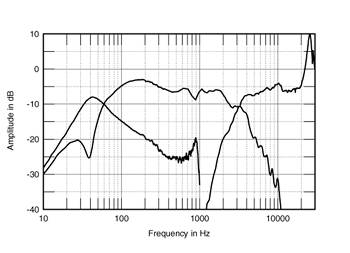Right I've had a coffee so I'll answer a few of these but no idea where you are trying to go
if you need DSD to capture the loveliness of vinyl, and people can hear the loveliness of vinyl on any old speakers then you should be able to hear the loveliness of DSD/unloveliness of pcm on any old speakers.
Perhaps I have misunderstood you, because I was under the impression that you had said that the special quality of vinyl could only be reproduced by dsd and not by PCM.
Is that the special quality of vinyl which ordinary people hear on their quad ESL or Tannoys or whatever or the special quality of vinyl which only people whose speakers go out to 100Khz can hear?
it doesn't. If you have a valve amp I would not expect you to hear 24 bit resolution. I have a valve amp.
righto
I can't hear a test tone above 13khz. Most people my age can't. I can sense clearly if I remove frequencies above 15khz however. Is that the sonic effect of the filter? Why would that one be audible and the PCM one not be?
the problem is that once you accept that you can't hear the material over 13Khz you are left with having to produce a theory about what is going on. If the theory is that PCM filters create audible artefacts even if filtering out inaudible sounds then that leaves the question "why are the artefacts audible?". If the PCM filter has created audible artefacts ie artefacts lying within the range of your hearing then the speakers would only have to reproduce the sounds within the range of your hearing in order to show the shortcomings of PCM.
It does not follow that you need flat frequency response well beyond your hearing range to hear the artefacts caused by the 16/44 anti alias filter.
Yes. Absolutely. Placebo and the power of suggestion. I'm not claiming one way or another remember, I am merely stating that if you want to see a car passing outside you will at least need a window.
Yes but the problem is that it is not clear what is being tested. If it is the hypothesis that people can hear program material over 20Khz then clearly you need to be able to reproduce those sounds. If you are testing the hypothesis that a steep linear phase anti alias filter with a transition band around 20-22Khz is audible to ordinary folk, maybe not.
If you are testing the hypothesis that it is the presence of that filter which means that the properties of vinyl which are audible to all cannot be captured at 16/44, again not really.
if you are testing the hypothesis that for some reason or other 24/96 recordings sound better than 16/44, again maybe not.
There you go stating "facts" again. FWIW most major transducer manufacturers have continued to drive FR and resonance upwards. BW, Focal, TAD, JBL, Revel, Scanspeak. All of these companies are at the cutting edge of drive unit design and continue to extend HF response. Look at the FR of many modern HF drive units. I've always wondered why bother if it's inaudible?
I can think of lots of reasons: why do dac manufacturers produce 24 bit dacs?
In any event what speakers, in your analysis, can test the difference between dsd and 24/192 or upwards. So to test the hypothesis that DXD processing affects DSD files you need to have speakers which are -3dB at what frequency? Are such speakers common? Do they exist? Should we therefore ignore anyone who claims to be able to hear this?
DSD 64 doesn't really have a FR that even extends to 20khz so I think you are maybe barking up the wrong tree there.
Really? DSD does not have a brick wall filter, although it has a relatively shallow filter starting somewhere or other. The presence of frequencies above 20Khz and the absence of the brickwall filter are two sides of the same coin (after all what is 16/44 but dsd plus a brick wall filter and some decimation).
So what FR do you require for your speakers
a) to hear the difference between 16/44 and dsd64
b) to hear the difference between 16/44 and 24/96
c) to hear the difference between 24/96 and dsd
d) between 24/192 and dsd?
Look at the FR for the 805's you are using
Do you not think that resonance is going to be as destructive to the signal (and audible) as any filter?
actually I would have expected that any speaker would have peaks and troughs of that level in room at your ears because of comb filtering. They will have peaks and troughs like that even below 20Khz.
Anyway I thought my speakers were supposed to be rolling off not peaking.
I'm not going to get into some silly circular argument with you here. I think you are getting confused - especially with what I have stated with regards to both vinyl and DSD. Maybe you are getting me confused with someone else. Whatever. If you think my position here IS contradictory then please be so kind as to post and example rather than just inferring it.
Its simple- if your position is that in order to hear the effect of an AA filter you need flat FR well beyond the transition band of that filter, then frankly 16/44 is bound to be adequate for most people (ie the effect of the PCM filter is unlikely to be a problem and the chances that anyone could hear the difference between 24/96 and dsd would be incredibly slight. Equally it would follow that 16/44 needledrops of vinyl would sound the same as PCM or dsd needledrops.


